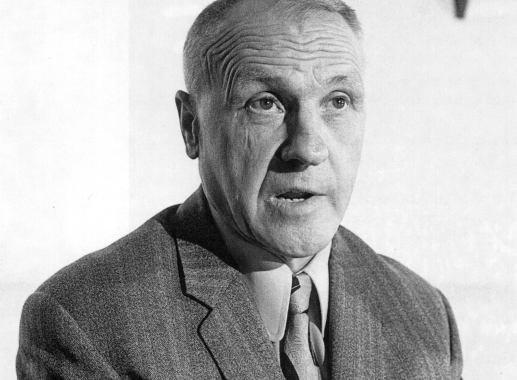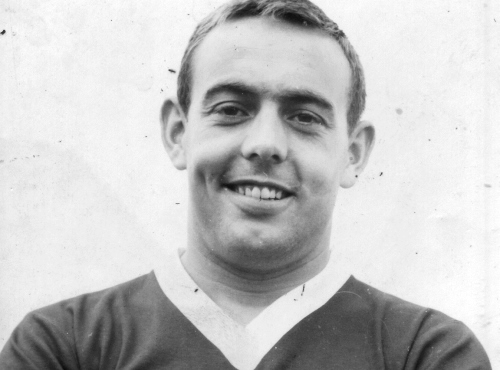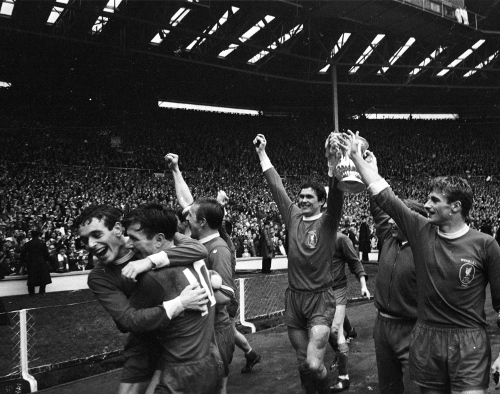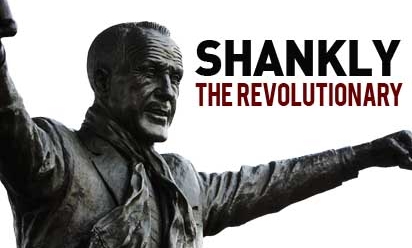How Bill Shankly changed the team
To mark the 100th anniversary of the birth of the great Bill Shankly, we've taken a look at the different areas of the club he revolutionised during his 15 years at the helm – and today we focus on the team.

Melwood was a hive of transfer activity over the last five days.
Silver-plated vans with blacked-out windows ghosted in and out, while behind closed doors contracts were signed, interviews executed, shirts held and photos snapped.
News presenters stationed at the gates were mobbed in the midst of delivering bulletins as Sky Sports News went into overdrive, its flashing tickers and excitable hosts ramping up the coverage to a whole new level.
A record amount of money was exchanged and fans found all they needed to know about their new heroes at the click of a button on websites, forums and Twitter.
It was a scenario that contrasted starkly with the one met by Sammy Reid in February 1960, when he reported to Melwood to become Bill Shankly's first signing as Liverpool manager.
Shankly was just two months into his reign as Reds boss when he moved to snap up the Motherwell youngster for £8,000.
He'd been to Melwood and judged it dilapidated, seen the players train in Anfield's main stand car park and vowed to change it. Now he was faced with revolutionising the team.
Days after he was installed as boss, Shankly was at Anfield to watch from the stands as his new side, picked by the board of directors, were disposed of by Cardiff 4-0 in front of a deflated home crowd.

"After the match, I knew that the team as a whole was not good enough," said Shankly. "Within a month I wrote down 24 names that I thought should go and they went inside a year."
Ageing icon Billy Liddell played one game before bidding farewell to the Kop, and at the end of Shankly's first season, six players were granted free transfers.
The Scot knew exactly the type of player who would help reignite Liverpool. And his first port of call was Denis Law, who he knew inside out from their time at Huddersfield.
Law, who went on to become a Manchester United legend, might have helped kick-start the Anfield dynasty had the board not turned down Shankly's request to try and sign him. As it was, in March 1960, Law signed for Manchester City for a British record fee of £65,000.
Shankly turned his focus to Jack Charlton, Bobby's brother, but was unable to prise the centre-half away from relegation-threatened Leeds.
So instead, Motherwell's Sammy Reid became his first signing as Liverpool boss - but take a quick glance through the history books and you'll find no mention of Reid's name. Shankly's first signing didn't play a single game for the club and he departed shortly after.
The arrival of Kevin Lewis, Gordon Milne and Alf Arrowsmith more than made up for the failure of Shankly's initial foray into the transfer market as Reds boss.
Then, on a Sunday morning in 1961, Shankly unfurled his favourite newspaper, the Daily Post, to be greeted by the headline: 'St John Wants to Go'.
Ian St John had given all the indications he wanted to depart Motherwell, and Shankly, who had monitored the burly striker's progress from afar for three years, sprung into action.

"I was on the phone straight away and we were in Motherwell on Monday night," wrote Shankly in his autobiography My Story.
"I said to Mr Eric Sawyer, a director at Liverpool, 'he's not just a good centre-forward - he's the only centre-forward in the game'. We arranged the fee of £37,500 on the Monday night and signed St John the next day."
Four months later, in July 1961, he added the colossal Ron Yeats to the side and along with the Saint, the pair acted as catalysts to the Scot's first great Liverpool team.
Shankly had been searching for bedrocks and a spine for his side and he identified it in the steely Scottish duo, who had both the character and the necessary skill.
Add in to that the players Shankly had developing around the edges, the likes of Ian Callaghan, Tommy Smith and Roger Hunt, and it's little wonder they walked to promotion from the second division in 1962.
Two years later, in 1964, they were league champions.
This was a time when the great Tottenham team of the early 1960s was in full swing and Manchester United, with the likes of George Best, Bobby Charlton and Law, were the team of individuals, who enthralled the nation.
But they couldn't match the ethic Shankly instilled in his side; that of all of one and one for all.
His was a hard team to beat and they played good, quick football. They had talented players, but they were so subsumed to the identity of Shankly that they were more of a collective unit.
In 1965, they won the FA Cup for the first time in Liverpool's history. In the very same year, they could have very easily have been the first British team to win the European Cup, but for a second leg from hell against Italian giants Inter Milan in the semi-finals.

A year later, Shankly's first great team won the first division title by finishing six points clear of Leeds United; however, it was to be their last trophy win for seven years.
Why? Shankly admitted afterwards that it was in a large part down to his own decision not to replace and reinvigorate his side, out of loyalty to the players who had served him so staunchly.
He looked away out of dedication to his team.
"I thought some of them would have gone on longer than they did," he admitted. "They had won the league, the FA Cup and the league again.
"I would think about the players we had and I could see that some of them were going a bit."
Shankly tinkered around the edges, but to no avail - and it took until 1970, the Reds by then three years trophy-less, until he realised his great team needed to be dismantled and rebuilt.
Liverpool were languishing lower down the table and Shankly knew he needed a whole new blooding process.
The real turning point came in February 1970, when Barry Endean's 63rd minute winner sealed a humiliating 1-0 win for Watford over the Reds in the sixth-round of the FA Cup at Vicarage Road.
"The breaking-up process began there," explained Shankly. "After Watford I knew I had to do my job and change the team. I had a duty to perform to myself, my family, Liverpool football Club and the supporters."
Gerry Byrne was forced to end his career through injury, while the likes of St John, Hunt, Yeats and Tommy Lawrence were left out of the side.
They were replaced by the likes of Alec Lindsay, Steve Heighway, John Toshack and Brian Hall, who joined a team that had already added Emlyn Hughes and Ray Clemence in the previous seasons.

But there was one key ingredient left that was necessary to breathe life into the great man's second side - and in May 1971 it arrived in the form of Kevin Keegan.
In Shankly's words: "He was thrown into the fire and he ignited the new team. He brought it to life with awareness and skill. He was the inspiration of the new team."
The new team won the UEFA Cup in 1973 - Liverpool's first European trophy - and the FA Cup the following year in what would be Shankly's final competitive game.
Paisley would take them on to unprecedented success. And while he prospered from Shankly's guidance and the foundations he laid, in terms of the team, Liverpool also learned a crucial tool in ensuring their domination went unchallenged.
That being - you replace players just as they are about to reach their peak. You do it one after another and you are always looking and ready to replace. You bring younger players through and you constantly change the team.
That way you don't notice the seamless transition; you don't see the joins - and you reap the rewards on the field.



